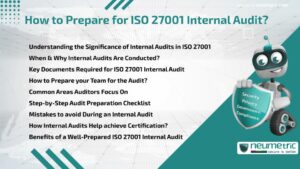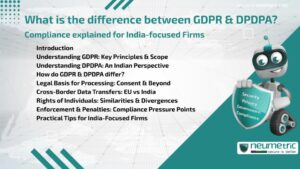Table of Contents
ToggleIntroduction
When companies begin preparing for a SOC 2 Audit, many assume it’s a straightforward process. However, assumptions often lead to delays, wasted effort or incomplete Compliance. Understanding the SOC 2 Audit timeline misconceptions is crucial for smooth execution. This article clears up common misunderstandings, helps teams plan efficiently & keeps expectations grounded.
What is the SOC 2 Audit Timeline?
The SOC 2 Audit timeline refers to the full period covering preparation, Readiness Assessment, Audit execution & Report delivery. It varies based on whether a company pursues a Type 1 or Type 2 report. A SOC 2 Type 1 review examines Controls at a point in time. A SOC 2 Type 2 Audit evaluates Control effectiveness over a period—typically three (3) to twelve (12) months.
While firms often rush into Audits hoping for fast results, ignoring preparation requirements creates issues. Let’s examine key SOC 2 Audit timeline misconceptions that cause confusion.
Misconception 1: SOC 2 Audits are Easy & Quick
Many assume Audits are over in a week or two. Realistically, a complete SOC 2 Type 2 RoadMap from start to end often will take six (6) months. Activities include defining Scope, implementing Controls, collecting evidence, running tests & working with Auditors.
An overly optimistic timeline creates unnecessary pressure. Unlike a Certification, SOC 2 requires real operational maturity.
Misconception 2: You Only Need to Prepare During the Audit Period
Preparation is not confined to the Audit period. Companies need two (2) to three (3) months of groundwork before the observation window starts. This includes reviewing Controls, identifying Risks & fixing Gaps.
Thinking that everything starts once the Auditor arrives is a major SOC 2 Audit timeline misconception. Successful Audits begin with early Readiness Assessments & mock reviews.
Misconception 3: SOC 2 Type 1 & Type 2 Have the Same Timelines
Some companies don’t realise the stark difference between SOC 2 Type 1 and SOC 2 Type 2. A Type 1 can be completed in a few weeks, while a Type 2 stretches over months.
Assuming both of them follow the same path will lead to wrong expectations. A Type 1 is ideal for Startups proving Control design. A Type 2 suits mature Organisations ready to prove ongoing Control operation.
Misconception 4: Automation Eliminates the Timeline
Security Automation Tools are helpful but do not replace Audit timelines. They assist with Evidence Collection & Monitoring, but human processes like Risk Assessments, Control discussions & Policy implementation still take time.
Automated Platforms often market instant Compliance, but relying on tools alone is one of the most damaging SOC 2 Audit timeline misconceptions. A manual review by the Auditor is still essential.
Misconception 5: You Can Start Without Any Controls in Place
Thinking you can “start from scratch” during an Audit is a flawed belief. Auditors expect core Controls to already be in place. Without them, your Report will be delayed or inconclusive.
The readiness phase should confirm the existence of Controls related to Access, Incident Response & Data Security. Skipping this step leads to failed Audits.
Practical Tips to stay on Track
Avoiding SOC 2 Audit timeline misconceptions means planning with precision. Here are a few Best Practices:
- Start readiness activities early—ideally three (3) months before Audit kickoff.
- Assign Internal Stakeholders with clear roles.
- Set realistic milestones & allow buffer time.
- Use automation wisely, but maintain manual oversight.
These steps reduce panic & increase Audit confidence.
Common Delays & their Real Causes
- Poor documentation or outdated Policies.
- Incomplete Control implementation.
- Miscommunication with Auditors.
- Technical issues with Evidence Collection.
Being honest about delays helps address the root problem instead of blaming the Audit process.
Conclusion
Misunderstanding the Audit timeline adds unnecessary stress to SOC 2 efforts. It slows teams down & wastes resources. By recognizing & correcting SOC 2 Audit timeline misconceptions, Organisations can approach Compliance with clarity, confidence & realistic expectations.
Takeaways
- SOC 2 Audits take longer than most people expect.
- Proper preparation starts well before the Audit begins.
- Type 1 & Type 2 timelines differ significantly.
- Automation supports Audits but doesn’t shorten core processes.
- Readiness matters—Audits aren’t for building Controls from scratch.
FAQ
What is the most common SOC 2 Audit timeline misconception?
That the Audit will be fast & easy. Most teams underestimate the effort & preparation needed for a Type 2 Audit.
Can I skip the readiness phase before starting a SOC 2 Audit?
No. Skipping the readiness phase is one of the biggest SOC 2 Audit timeline misconceptions & often leads to Audit failure or delays.
Does automation make the SOC 2 Audit process instant?
No. While automation helps with monitoring & evidence, human input & Control reviews are still necessary.
How long does a SOC 2 Type 2 Audit usually take?
On average, a full Type 2 Audit takes six (6) to twelve (12) months, depending on the scope & maturity of your systems.
Why is there confusion between SOC 2 Type 1 & Type 2 timelines?
People often assume both Audits have similar durations, but Type 2 covers a longer operational period & thus requires more planning.
Are SOC 2 Audits only for large enterprises?
No. Startups & Small Businesses also seek SOC 2 Compliance, but they must still follow the full timeline to succeed.
What causes the most delays in SOC 2 Audits?
Common causes include poor documentation, lack of internal ownership & unrealistic expectations about what Auditors will accept.
Is it okay to start the Audit process before Policies are finalised?
No. Policies must be in place & operational before the Audit period begins. Auditors require evidence that processes are being followed.
Need help?
Neumetric provides organisations the necessary help to achieve their Cybersecurity, Compliance, Governance, Privacy, Certifications & Pentesting goals.
Organisations & Businesses, specifically those which provide SaaS & AI Solutions, usually need a Cybersecurity Partner for meeting & maintaining the ongoing Security & Privacy needs & requirements of their Clients & Customers.
SOC 2, ISO 27001, ISO 42001, NIST, HIPAA, HECVAT, EU GDPR are some of the Frameworks that are served by Fusion – a centralised, automated, AI-enabled SaaS Solution created & managed by Neumetric.
Reach out to us!





